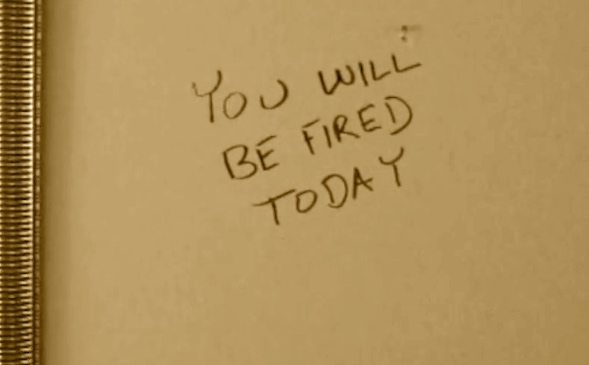To avoid paying expensive severance packages to terminated employees, HR departments have long utilized the strategy of writing on their office or cubicle walls to get them to resign on their own – thus avoiding expensive severance packages and potential lawsuits.
When they quit, of course, the employees tell people they “saw the writing on the wall.”
Today, with so many working from home, many US companies have adapted the practice to also include living and dining rooms, even bedrooms.
According to HR Director Cletus Altman, of Burlington, Vermont’s Wetmore Group, his staff has devised a number of creative methods of clandestinely gaining access to the walls of employees’ homes. He doesn’t provide specifics, other than to say that grappling hooks and Listerine mouthwash are usually employed.
“Bottom line, when people see the writing on the wall they take it seriously,” he says. “So it’s incumbent upon us to go wherever the wall is.”
In most cases the process begins with brief, non-threatening messages: “Get your butt in gear!” or “Step up to the plate!” If the employee doesn’t resign, the severity escalates to “How do you justify your paycheck?” “You’re finished here!” Finally, it’s “Clean out your desk!”
“Traditionally over 90 percent of the people whose walls we write on have resigned,” says Altman. “And we’ve been able to maintain that level since we expanded into homes.”
The program costs Wetmore just $19.99 annually for erasable magic markers, and Altman estimates it has saved the company over $54 million in separation costs.










